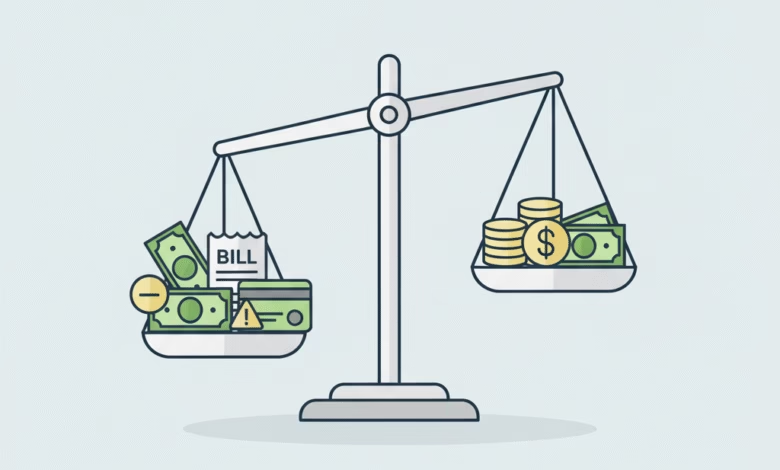How corporate actions (mergers, splits, spin-offs) affect stock prices
Understand how corporate actions impact the stock market

As an investor, it’s easy to get caught up in the daily rhythm of the market. We watch the charts, follow the news, and track the small, incremental changes in our stock prices. But every so often, a company will announce a major, transformative event that has nothing to do with daily market noise—a move that can fundamentally alter its structure, its strategy, and, most importantly, its stock price.
These events are known as corporate actions. They are decisions made by a company’s board of directors and management that can have a profound impact on its shareholders. While some are routine, like paying a dividend, others are seismic shifts—mergers, stock splits, and spin-offs.
For many investors, these announcements can be a source of confusion and anxiety. What does this mean for my investment? Should I sell? Should I buy more? This guide will demystify three of the most significant corporate actions. We will break down what they are, why companies do them, and the crucial ways they affect your portfolio.
What Are Corporate Actions? A Look Behind the Curtain

A corporate action is any event initiated by a public company that brings a material change to its securities—either its stock or its bonds. These are not market rumors or analyst predictions; they are official, strategic moves approved by the company’s leadership.
Think of it this way: the daily stock price is the score of the game, changing second by second. A corporate action is like the league office announcing a major rule change, a team trade, or the creation of an entirely new team. It’s a structural change that can alter the game itself. Understanding these moves is critical for any serious investor because they require you to look beyond the daily chart and analyze the bigger picture.
Mergers & Acquisitions (M&A): When Two Companies Become One
This is one of the most dramatic corporate actions. A merger combines two companies into a single new entity, while an acquisition is when one company (the acquirer) buys another company (the target). In the financial world, the term M&A is often used to cover both scenarios.
Why do companies engage in M&A?
The motivations are powerful and strategic:
- Accelerated Growth: Buying another company is often the fastest way to expand into new markets, acquire new technology, or grow a customer base.
- Creating Synergies: The acquirer hopes that the combined company will be worth more than the sum of its parts. “Synergies” can come from cost savings (e.g., eliminating duplicate departments) or revenue growth (e.g., cross-selling products to each other’s customers).
- Eliminating Competition: Buying a rival is a direct way to increase market share and pricing power.
How does M&A affect stock prices?
The impact is usually very different for the two companies involved:
- The Acquired Company (The Target): The stock price of the company being bought almost always jumps significantly upon the announcement. This is because the acquiring company must offer a “control premium”—a price well above the current market price—to convince the target’s shareholders to approve the deal and sell their shares. For an investor holding the target stock, an M&A announcement is often a source of a quick and substantial gain.
- The Acquiring Company: The stock price of the company doing the buying often dips slightly or trades flat in the short term. There are several reasons for this. The market may think the acquirer is overpaying (the “winner’s curse”). The acquirer may be taking on a lot of debt to finance the deal. And investors are often skeptical about the massive challenge of successfully integrating two different corporate cultures and systems. The long-term success for the acquirer’s stock depends entirely on whether those promised synergies actually materialize.
What does this mean for you as an investor?
If you own shares in the target company, you will typically be presented with a choice, depending on the terms of the deal:
- A Cash Buyout: The acquirer buys your shares from you for a fixed cash price per share.
- A Stock Swap: You receive a certain number of shares in the newly combined company in exchange for your old shares.
- A Combination: You might receive a mix of both cash and stock.
Stock Splits: The Psychology of Slicing the Pie

A stock split is a corporate action where a company increases its number of outstanding shares while proportionally decreasing the price of each share. The total value of the company (its market capitalization) and the total value of your investment remain exactly the same.
The most common splits are 2-for-1 or 3-for-1.
- Example: Imagine you own 100 shares of a stock trading at $200 per share. Your total investment is worth $20,000. The company announces a 2-for-1 stock split. After the split, you will own 200 shares, but each share will now be trading at $100. Your total investment is still worth $20,000.
Why do companies do stock splits?
The primary reason is psychology and accessibility. When a company’s stock price gets very high (think hundreds or thousands of dollars per share), it can seem expensive and out of reach for smaller retail investors. By splitting the stock, the company lowers the price per share, making it more attractive and seemingly more affordable to a wider audience. This can increase trading volume and liquidity.
How do stock splits affect stock prices?
The split itself does not add any intrinsic value. Think of it like exchanging a $20 bill for two $10 bills—you still have the same amount of money. However, a stock split is often interpreted by the market as a strong signal of confidence from the company’s management. A company typically only splits its stock when its price has risen significantly and management is optimistic that this growth will continue. This bullish signal, combined with the increased accessibility for retail investors, can sometimes lead to a short-term rally in the stock’s price around the time of the split.
The Opposite Move: What Is a Reverse Stock Split?
A reverse stock split is the opposite: a company reduces its number of outstanding shares and increases the price per share proportionally. For example, in a 1-for-10 reverse split, every 10 shares you own become 1 new share.
Companies do this when their stock price has fallen to a very low level, often below $1.00. Major exchanges like the NYSE and NASDAQ have minimum price requirements, and a reverse split is often a last-ditch effort to boost the price and avoid being delisted. Because of this, a reverse stock split is almost always viewed as a negative signal about the company’s financial health and prospects.
Spin-Offs: Unlocking Value by Setting a Business Free
A spin-off is a corporate action where a large parent company separates one of its divisions or business units into a brand new, independent, publicly-traded company.
Why do companies do spin-offs?
The core idea is to “unlock value.” Sometimes, a large, complex conglomerate has a hidden gem—a fast-growing, highly profitable division that is being overlooked or undervalued by the market because it’s buried inside the larger, slower-growing parent company.
By spinning off this division, the parent company allows it to stand on its own. The new company gets its own dedicated management team, its own stock, and the ability to pursue its own growth strategy without being held back. Famous examples include eBay spinning off PayPal and Pfizer spinning off its animal health division, Zoetis.
How do spin-offs affect stock prices?
This action can create value for both the parent and the new company:
- The Parent Company: The parent company’s stock can often rise after a spin-off. It allows management to focus on its core business and may result in a more streamlined, efficient operation. If the division being spun off was a slow-growing or problematic one, shedding it can be seen as a major positive.
- The New Company (the “SpinCo”): The newly independent company’s stock begins trading on the open market. Its performance from that point on is based entirely on its own merits. Historically, spin-offs have often been excellent investments. The new management team is highly motivated to succeed, and as a standalone entity, the company can attract investors who are specifically interested in its niche industry.
What does this mean for you as an investor?
If you are a shareholder of the parent company at the time of the spin-off, you will typically receive shares of the new company as a special, tax-free dividend. One day you own stock in one company; the next, you own stock in two. It’s then up to you to decide whether to hold both, sell one, or sell both, based on your re-evaluation of each business as a separate investment.
How Should You React as an Investor? Key Takeaways

Corporate actions can be complex, but your response should be deliberate and calm.
- Don’t Panic: The announcement is just the beginning. These processes take time. You don’t need to react instantly.
- Read the Official Documents: Your broker will send you official materials, and the company will file detailed documents (like proxy statements and 8-K filings) with the Securities and Exchange Commission (SEC). Read them to understand the terms and the timeline.
- Re-evaluate Your Investment Thesis: The most important question to ask is: “Does this change the reason I originally invested in this company?” A corporate action can fundamentally alter a business, for better or for worse.
- Understand the Tax Implications: While many of these actions are structured to be tax-free, cash buyouts in an M&A deal, for example, will trigger a capital gains tax. Always be aware of the potential tax consequences.
By understanding the mechanics and motivations behind these major corporate moves, you can cut through the noise, analyze the situation clearly, and make smarter, more informed decisions for your portfolio.





